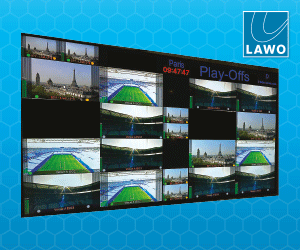Strategic, high-impact publicity – teaser trailers, exclusive interviews, behind-the-scenes social media content – generates massive anticipation and translates into record-breaking first-week viewership.
Ramadan drama is a cultural cornerstone, a battleground for audience attention and a litmus test for entertainment trends across the Middle East. The battle for viewership begins months before a single episode airs. Strategic, high-impact publicity – teaser trailers, exclusive interviews, behind-the-scenes social media content – generates massive anticipation and translates into record-breaking first-week viewership.
Important new trends this year
TikTok is the new Ramadan drama arena. It has emerged as the ultimate engagement driver, creating organic virality for series that leverage its power. Ahmed Malek’s in-character TikTok videos as Wel3a in Welad El Shams not only trended and built excitement for the show but also drove a surge in streaming for the tracks he featured. Traditionally, behind-the-scenes content was avoided for fear of leaks and spoilers, but TikTok has transformed it into an essential publicity tool that audiences now actively anticipate.
The next is a 15-episode series. The shift to 15-episode formats reached a tipping point this Ramadan, with 57% of series adopting this structure, up from 14% last year. Shorter narratives prevent mid-season fatigue, making them a preferred choice for modern audiences.
This year also saw a spike in the rise of digital-first Ramadan content. Streaming platforms like Yango Play, Shahid, Watchit, Viu and TOD are no longer just alternatives to TV, they are shaping Ramadan drama consumption. This year, El Mahatta, El Sharnaqa, El Halangi and Wohoosh bypassed traditional television networks entirely, premiering exclusively on digital platforms.
Impressively, we are witnessing a generational shift reshaping Ramadan drama. While legends like Nelly Karim and Ahmed El Sakka remain industry staples, rising stars such as Huda El Mofti, Ahmed Ghozi, Ahmed Malek, Taha Dessouky and Yasmina El Abd are driving fresh audience engagement. Producers are actively casting younger leads to attract Gen Z viewers, ensuring content evolves with shifting consumption habits.
TikTok has also become a talent incubator, with digital-native creators transitioning to acting. This Ramadan, around 10 TikTokers from Egypt and Saudi Arabia made their acting debuts in major productions, bringing built-in audiences with them. Shari’ Al Asha featured four content creators – Lama Al Kanani, Manal Al Ahmed, Maha Al Ghazal and Tarfa AlShareef – while in Egypt, influencers like Dona Emam (Athena), Malak Hassan (Montahy El Salaheya) and Amira Adeeb (3aysha El Dor) stepped into acting roles.
Another important factor is music, which has become a defining publicity tool and an integral storytelling device. Nostalgic classics fuelled the emotional impact of Kamel El Adad, Welad El Shams and Lam Shamseya. Layali Al Shumisi released its original soundtrack before its premiere, embedding the series into pop culture early. Similarly, the title track for Esh Esh connected with audiences even before they met the characters on screen.
What’s Next? The Future of Ramadan Drama
At the heart of every successful Ramadan series is a compelling story that resonates, provokes and captivates. Whether controversial, emotional or sensational, a great story is what ultimately sets a production apart. In today’s entertainment landscape, cutting through the clutter requires sharp writing and a strategic approach to digital engagement. The most successful productions of 2025 mastered the art of blending strong narratives with high-impact publicity, influencer marketing and streaming partnerships.
Mai Abaza is CEO of Publicist Inc., which recently released Ramadan insights report 2025.

















































































